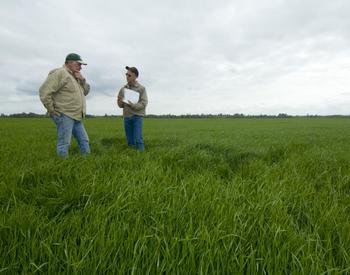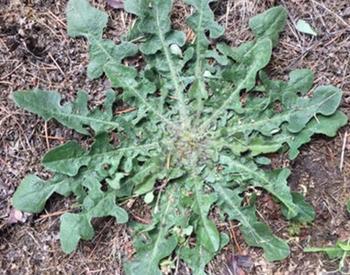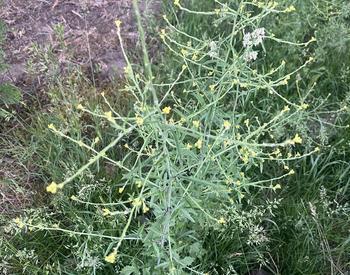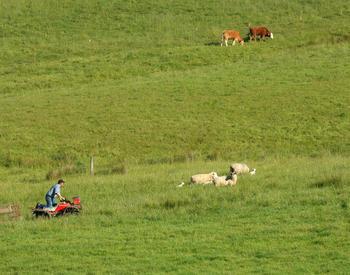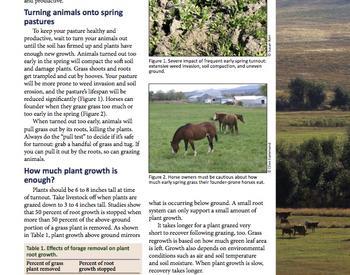[MUSIC PLAYING]
Hi.
It's going to be important to take a representative sample
of your hay bales in order to determine the nutritional
value of your hay and also to determine whether or not there
are any toxins in your hay.
There are some critical steps that you'll
need to know in order to take a representative sample
of your hay bales.
Let's go ahead and look at those.
So it's important to find a unique lot of hay.
When to sample
So this is a uniform group of bales,
under the same irrigation, under the same seeding
and fertilizing.
Tools
The best time to sample your hay is
as close to feeding as possible or just
before you sell your hay.
In order to do this right, you're
going to have to have the right tools.
What you're going to need is a hay probe.
And what that is, it is going to be a at least 12-inch probe
that can go into your hay bale.
At one end it's going to have some sharp teeth that
are going to need to remain sharp,
because that's going to penetrate the bale
and really produce the representative sample.
The ideal length is anywhere between 12 inches
and 18 inches.
Probe
We have a probe here that's going to be able to do that.
The diameter of the probe needs to be at least 3/4
of an inch wide.
And that's going to ensure that we're
going to get enough of the ha sample
to submit to the laboratory.
Representative sample
Now it's going to be important to take a representative sample
of the lot of hay.
So how do you take a representative sample
of your haystack?
What you're going to do is you're
going to go to the flat side of the hay bale.
And you're going go down about half an inch,
and place your hay probe in that middle of that flat side.
And you're going to go in about 12 to 18 inches.
[MOTOR WHIRS]
And you have your core sample.
You're going to go ahead and walk around that haystack
randomly and take additional samples.
Once you take the hay probe out of the hay bale,
not only is it sharp, but after you've sampled your hay,
it's going to be hot.
So don't touch that.
Sample bag
Now that you have your hay sample,
go ahead and take that hay and put it into a bag
that you've identified specifically
with the lot, your name, and also the date.
Composite samples
Walk around your hay bales and continue
to take core samples of your bales.
You're going to go ahead and composite all those samples
into your bag until you have about half a pound.
So now that you have your forage sample,
it's going to be important to get it to a laboratory as soon
as possible.
At the end of the day, it's going
to be important to the economic viability of your beef cattle
operation.
If you have any questions about the process,
feel free to visit an extension office
and visit with your field faculty member.
Until next time on "Oregon's Outback."








